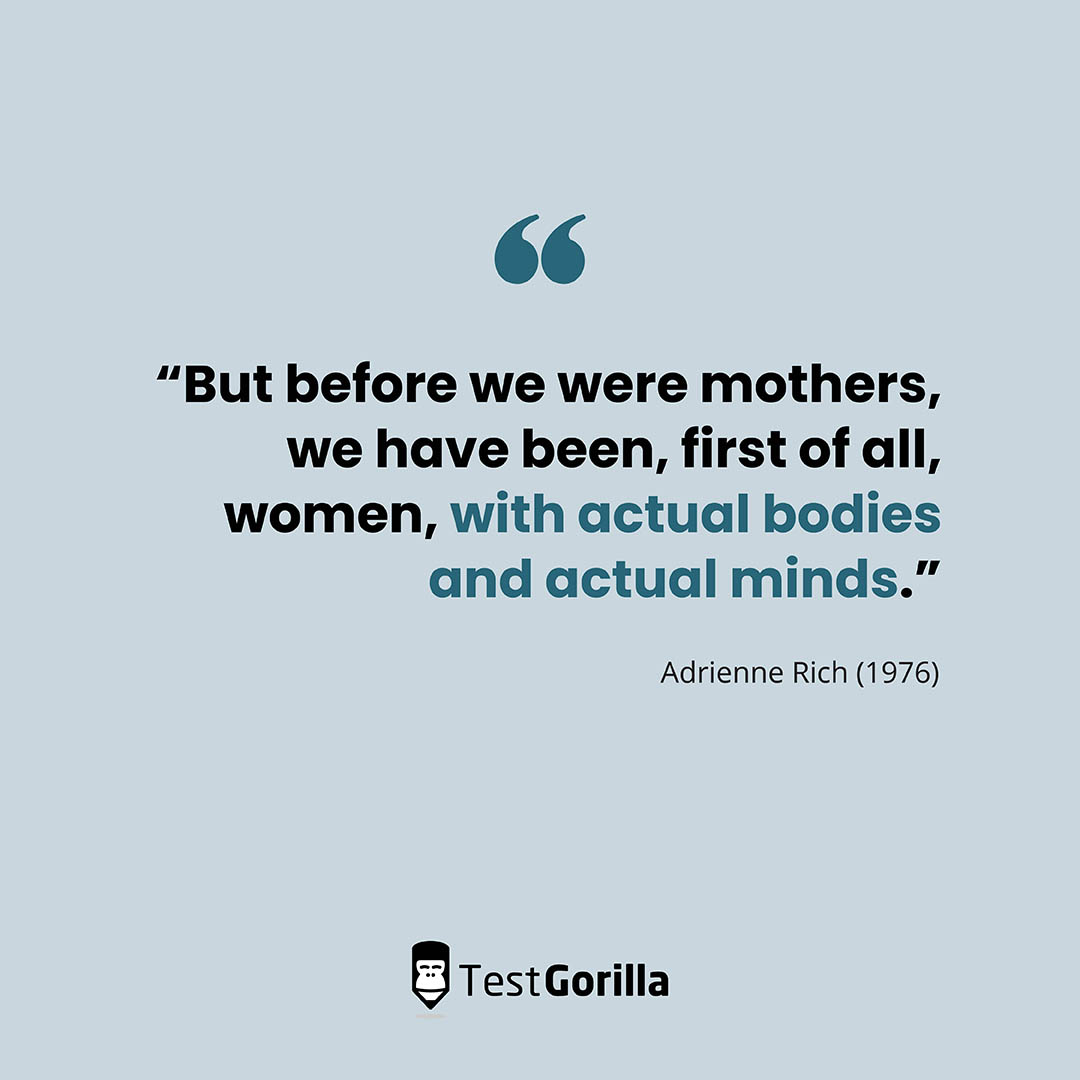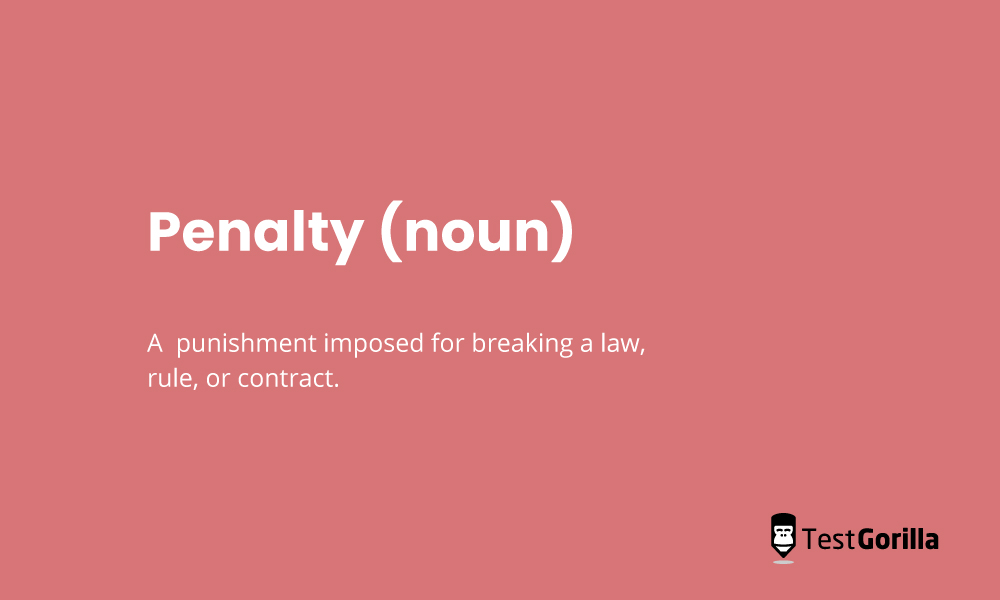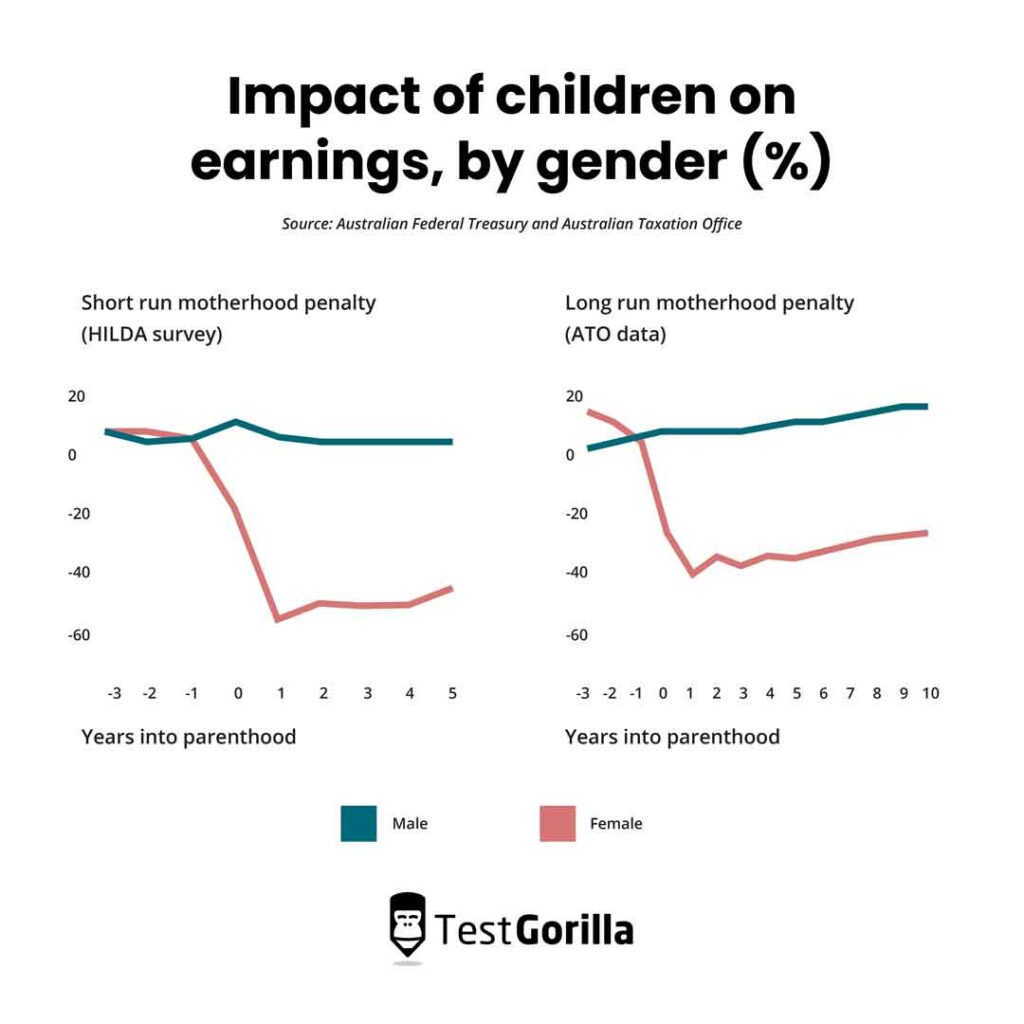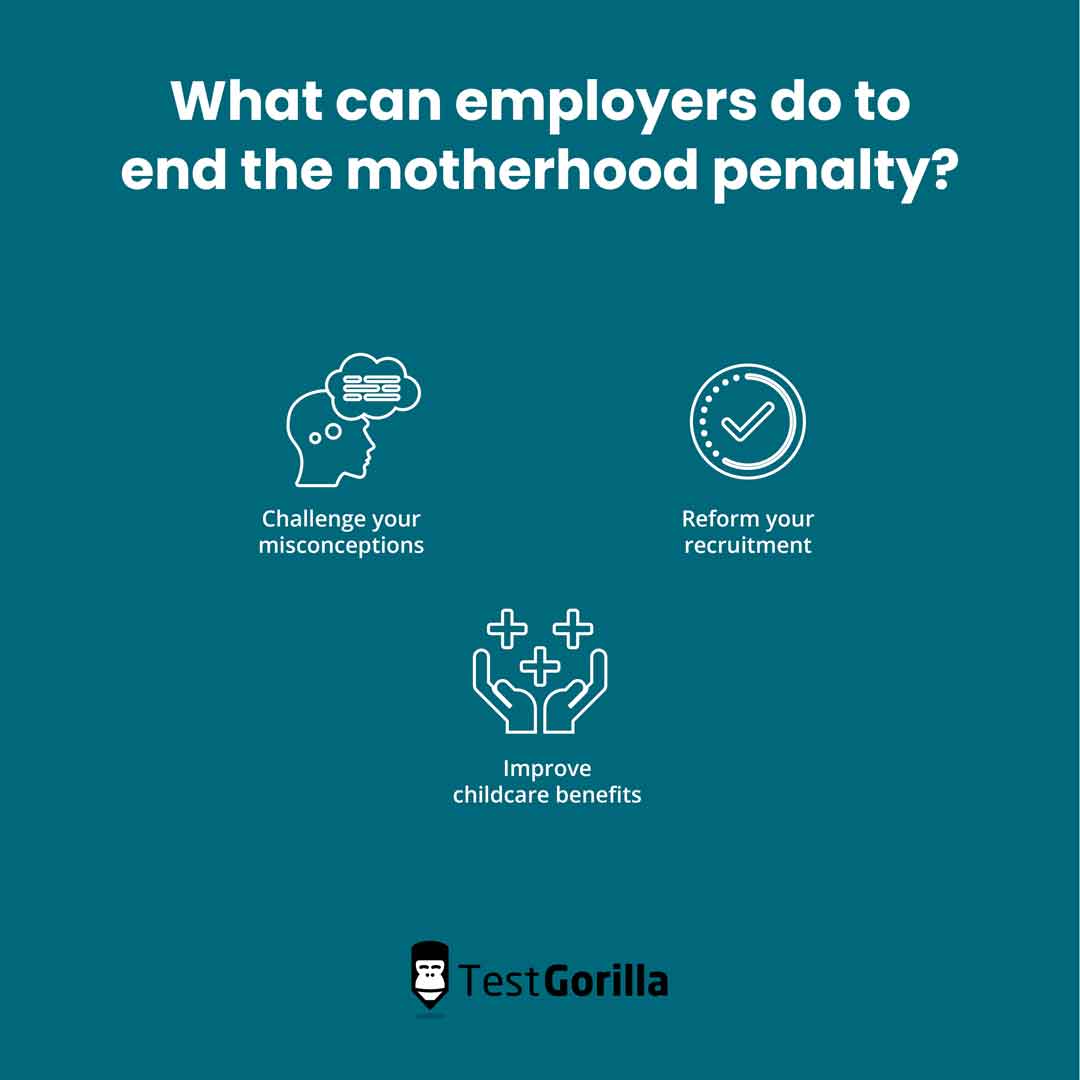Whether we have mothers, know mothers, or are mothers, it’s impossible to move through the world without being exposed to the beauty and the challenges of motherhood in some way. It’s an experience like no other, and, as those that become mothers know well, it can change or define the course of your life.
It can also change the ways that others perceive and define you. For this reason, becoming a mother is an economic and professional risk.
The motherhood penalty is a sociological term for the disadvantages in pay, perceived competence, and benefits that mothers experience in the workplace. Studies have shown that the motherhood penalty makes up 80% of the gender pay gap. Meanwhile, men are not penalized for, and can actually benefit from, becoming parents.
In this blog post, we’ll dive into the specifics of the motherhood penalty, as well as some actions that employers can take to effectively fight maternal bias in the workplace.
Table of contents
But before we were mothers, we have been, first of all, women, with actual bodies and actual minds.
Adrienne Rich
Why does the motherhood penalty exist?
Penalty (noun) – a punishment imposed for breaking a law, rule, or contract.
The “motherhood penalty” might seem like a bizarre turn of phrase. It’s not like the police go around handing out fines to mothers, attaching tickets to the front of their strollers. But people do incur a significant financial penalty when they become mothers – and we’re not talking about the money that gets spent on clothes, food, and other baby paraphernalia.
Sociologists Michelle Budig and Paula England coined the term motherhood penalty in their 2001 study, “The Wage Penalty for Motherhood,” which found an income reduction of 15% per child under 5 years of age. For Black and Indigenous women, this penalty went up to almost 20%.
In the past, penalties have been as harsh as a termination of employment altogether. This was actually the policy in the UK, where, until 1991, women serving in the Armed Forces were automatically discharged if they became pregnant. Millions in taxpayer money has since been spent on payouts to ex-servicewomen who claimed unfair dismissal.
Over 30 years later, this kind of blatant discrimination is now decidedly illegal. But the motherhood penalty endures.
Australia’s federal treasury released a research paper in October 2022 that found that the motherhood penalty is on average “persistent for at least a decade into parenthood,” and is the same regardless of a woman’s breadwinner status before having children. The analysis used data from the Australian Taxation Office and the Melbourne Institute’s Household, Income and Labour Dynamics in Australia survey.
This is a penalty, plain and simple: Something is being taken away from people because they have become mothers. But what law, rule, or contract is it that they’re breaking?
Prescribed gender roles lead to normative discrimination
Societies across the world hold stubborn, and often unconscious, assumptions and biases about the roles people should take because of the gender they were assigned at birth. This means that women are expected to take the role of the primary caregiver when they become parents. In heterosexual relationships, the man is expected to become, or continue to be, the breadwinner.
Although many mothers choose to take more time off work than their partners and take on the majority of childcare, the language of choice is complicated and often hides inequality. Few parents have the money to choose to opt out of paid work entirely. Do situations like these equate to a choice to be a working parent?
Choice can be understood only within the framework of available opportunity.
Alice Kessler-Harris, labor historian
Gender norms insist caregiving is a mother’s sole purpose
When mothers return to work, they are perceived to be less competent or less committed to their careers. Gender roles insist that caregiving should now be their sole purpose. We call this normative discrimination. By its normative social description, a “good mother” is one who dedicates all time and energy to her children. She is therefore a less productive worker, because a “good worker” always puts work first.
This is the unspoken contract that women are breaching when they’re charged with the motherhood penalty. They haven’t actually signed anything, and there are no laws involved, but there are consequences for most of the mothers who don’t do what we are socialized to expect from them.
The ideal worker and the good mother are ideologically incompatible. You can be one or the other. There is no space to be both.
Marianne Cooper
The fatherhood bonus
On the flip side of the motherhood penalty, there’s the fatherhood bonus – the advantages working fathers get compared to working mothers and childless men. One explanation for the fatherhood bonus is that, in line with the male breadwinner stereotype, fathers are perceived to strive harder at work to provide for their families. One study suggests working fathers get a 21% wage bonus compared to men without children.
Domestic labor is divided unequally
These prescribed gender roles lead to unequal divisions of domestic labour. Women shoulder the majority of domestic chores within families, all of which are unpaid work.
Analysis from the UK’s Office for National Statistics shows that women carry out an average of 60% more unpaid work than men – this includes childcare, housework, cooking, and laundry. Even before they become mothers, women are expected to take on more work at home, so unequal divisions of domestic labour reinforce the social logic behind the motherhood penalty.
Part-time work inhibits wage and career progression
Because mothers on average take on a greater portion of childcare responsibilities, they are also far more likely to take on part-time work. The vast majority of part-time workers are mothers – especially mothers of young children.
One Institute for Fiscal Studies (IFS) report showed that about a quarter of the wage gap between working mothers and fathers is explained by the higher percentage of mothers in part-time work. “It is remarkable that periods spent in part-time work lead to virtually no wage progression at all,” says IFS associate director Monica Costa Dias.
The reasons for this are not yet fully understood, but the consensus is that part-time work offers few opportunities for professional growth or pay rise. If you work part-time, you lose out. And since mothers are more likely to take on part-time work, this loss is usually part of their penalty.
Childcare is unaffordable
Deeply connected to the statistics above is the issue of childcare. Mothers wouldn’t have to shift to part-time work if childcare was affordable and accessible to them. But, unfortunately, it hardly ever is.
Daycare centers in the US charge an average of $870 a month, not much lower than the average for monthly rent, and data for low-income families shows that 35% of their earnings are spent on childcare. 26% of women who left employment during the pandemic said it was because they had no options for childcare.
It is true that we need to fix the difference between what we expect from working mothers versus working fathers, but making childcare affordable effectively reduces the pressure on any working parent. Improved childcare policies consistently have a positive effect for working mothers, and in turn they boost women’s labor force engagement significantly.
What can employers do to end the motherhood penalty?
When it comes to building a world where becoming a mother is not so much of a professional and financial risk for women, there’s plenty of advice out there. The problem is, most of it puts the onus for ending the motherhood penalty on mothers themselves.
The Gender Bias Learning Project has developed a series of “survival strategies” for working mothers facing a wall of bias, and organizations like Mindful Return provide sound guidance for those seeking an empowered return to work after parental leave. These resources are helpful and necessary. But it’s important to emphasize that the motherhood penalty exists because of systemic discrimination in the workplace. And there are things employers can do to help end it.
Challenge your misconceptions
Counter-stereotype training, or stereotype replacement, is an implicit bias training technique that involves highlighting examples of people who contradict stereotypes. To combat the pervasive bias that working mothers are less committed to their careers, it is vital to keep telling the stories of mothers who also have successful and impressive careers.
In her book Power Moms: How Executive Mothers Navigate Work and Life, released in 2021, Joann S. Lublin collects the insights of 85 executive mothers across industries. She celebrates their stories and the gains working mothers have made (there are now more women, and mothers, heading corporations than ever before), but is frank about how much still must change.
Advocate, support, and celebrate
It’s also important for companies to internal have role models and advocates for working mothers. In an interview with Forbes, Lublin explains: “we have so many more women in senior-level positions who can advocate around parenting issues.” This makes a huge difference, and seeing mothers in senior positions goes a long way in challenging misconceptions about mothers at work.
Employers: celebrate your working mothers. Advocate for them. Talk to them – don’t assume that they don’t want to take on a big project because they have a kid at home; ask them. If they’re working part-time, help them with opportunities for growth. And if you find yourself questioning their competence or commitment, ask yourself why.
Reform your recruitment
A leading study on maternal bias found that, when compared to women with identical resumes but no children, mothers are 79% less likely to be hired.
In addition, a survey of 1,106 senior decision-makers revealed that 59% of those working for private companies said a woman should have to disclose if she is pregnant during the recruitment process, whilst 46% said it was also reasonable to ask if she has small children. You can read more here about why this is wrong (and probably illegal).
These statistics paint a picture of the true remit of the motherhood penalty. Not only are working mothers penalized in their existing workplaces: mothers seeking new employment are seen as less competent by biased prospective employers. It’s difficult for mothers to achieve a “mindful return” to work when the odds are stacked against them.
Traditional, resume-based recruitment processes reinforce bias, posing obstacles to candidates from marginalized groups, including mothers. The motherhood penalty is intersectional, too: the sociologists who coined the term found that wage penalties are greater for Black and Indigenous mothers.
Combat maternal bias with skills-based hiring
As an employer, the best way to knock down this wall of bias, which prevents mothers from even entering a new workplace, is to reform your recruitment practices. Whilst it’s important to try and overcome our own biases, many of them are unconscious to us. Resumes and cover letters allow unconscious bias to have a stake in dictating hiring decisions.
We believe that using skills-based hiring is the best possible way to reform your recruitment practices and make them less open to bias. Pre-employment skills tests are resume-based hiring’s data-driven alternative. They help employers to make hiring decisions based on real evidence of their candidates’ skills, without focusing on personal details like where their qualifications are from, or whether they have children.
In our recent report, the State of Skills-Based Hiring 2022, we studied the benefits experienced by those employers who are already using skills-based hiring. 91.1% of them have seen an increase in diversity, and 91.2% of them have increased their retention rates. These findings highlight skills-based hiring as a valuable tool for employers wanting to fight discrimination in their recruitment.
Improve childcare benefits
Making childcare more affordable overall is something that requires government leadership. In the US, there is finally momentum behind the fight for universal, government-funded childcare – politicians such as Elizabeth Warren are fighting to set up a network of publicly-funded childcare centers.
But systemic change takes time. In the meantime, employers can help to end the motherhood penalty by improving flexible working and childcare policies for their employees.
Robust child-care benefits, such as paid family leave, childcare subsidies, and summer care programs, can go a long way in helping working parents manage their lives. In addition, if employers are helping their employees secure childcare, they are less likely to think their working mothers should be at home. They will have helped parents secure childcare so that they can focus on work.
Patagonia, for example, offers on-site daycare for employees who work at its headquarters. It’s a big investment, but because of the impact on its bottom line and retention, the company estimates that it recoups 91% of the costs. Maya Uppaluru suggests it’s less about cost and more about priorities. “Considering the lavish benefits that many major corporations bestow upon their employees, including wellness centers, corporate retreats, and office decor budgets, this may be less an issue of budget and more of prioritization.”
Corporate childcare benefits are still uncommon. Only 11% of employees offer them, even though family-friendly policies are proven to improve profits and productivity. Although it will take more than improved employee benefits to end gender bias and the motherhood penalty, employers have a role to play in building a world where mothers are not discriminated against at work.
Preferences are shaped by policy, culture, the workplace, and the realities of daily life. The question is how women’s choices might change if their options were different.
Claire Cain Miller
Related posts
Hire the best candidates with TestGorilla
Create pre-employment assessments in minutes to screen candidates, save time, and hire the best talent.
Latest posts
The best advice in pre-employment testing, in your inbox.
No spam. Unsubscribe at any time.

Hire the best. No bias. No stress.
Our screening tests identify the best candidates and make your hiring decisions faster, easier, and bias-free.
Free resources
This checklist covers key features you should look for when choosing a skills testing platform
This resource will help you develop an onboarding checklist for new hires.
How to assess your candidates' attention to detail.
Learn how to get human resources certified through HRCI or SHRM.
Learn how you can improve the level of talent at your company.
Learn how CapitalT reduced hiring bias with online skills assessments.
Learn how to make the resume process more efficient and more effective.
Improve your hiring strategy with these 7 critical recruitment metrics.
Learn how Sukhi decreased time spent reviewing resumes by 83%!
Hire more efficiently with these hacks that 99% of recruiters aren't using.
Make a business case for diversity and inclusion initiatives with this data.





















